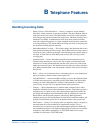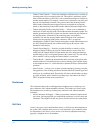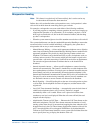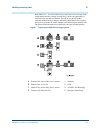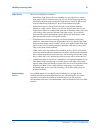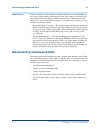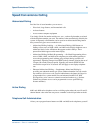
Handling Incoming Calls
111
Overview for Avaya IP600 Internet Protocol Communications Server
555-233-001 — Issue 5 — November 2000
B
Misoperation Handling
Note:
This feature is required only in France and Italy, but it can be used at any
location where the feature has been turned on.
Defines how calls are handled when a misoperation occurs. A misoperation is when
calls are left on hold when the controlling station goes on hook.
For example, a misoperation can occur under either of the following conditions:
• If you hang up prior to completing a feature operation (in some cases, hanging up
completes the operation, as in call transfer). If, for example, you place a call on
hold, begin to transfer the call, dial an invalid extension number, and then hang
up, that’s a misoperation.
• When the system enters night service while attendant consoles have calls on hold.
The system administrator can alter the standard Misoperation Handling to ensure that
an external caller is not left on hold indefinitely, or dropped by the system after a
misoperation with no way to reach someone for help.
• Manual Message Waiting — Allows multi-appearance telephone users to light the
status lamp associated with the manual Message Waiting button at another multi-
appearance telephone. They do this by simply pressing a button on their own
telephone. This feature can be administered only to pairs of telephones such as a
secretary and an executive. The secretary might press the button to signal to the
executive that a call needs answering or someone has arrived for an appointment.
The executive might use the button to indicate that he or she should not be
disturbed.
• Internal Automatic Answer — Allows specific telephones to answer incoming
internal calls automatically. This feature is intended for use with telephones that
have speakerphones or headsets. You simply press an Internal Automatic Answer
feature button, and calls are automatically answered when the telephone is idle.
Internal and Distributed Communications System (DCS) calls (not available with
Category B) can be answered using Automatic Answer, but only attendants can
use Automatic Answer to answer external calls directed to the attendant.
• Recall Signaling — Recall Signaling allows the user of an analog station to place
a call on hold, use the telephone for other call purposes, and then return to the
original call.
• Local Call Timer Automatic Start/Stop — Automatically starts the local timer of
a 6400-series telephone when a call is received. The timer is stopped
automatically when a call is ended. When a call is placed on hold the timer
continues to run, but is not displayed. When the call comes off hold, the total
elapsed call-time displays.
• Administrable Timeout on Call Timer — Enhances the Call Timer feature on the
6400-series telephones. The Call Timer feature measures the duration of a call,
starting a timer when the call is answered and stopping the timer when the call is
dropped. Previously, the Call Timer feature displayed the duration of the call for
only 5 seconds after the call was dropped. With Release 9, the Administrable
Timeout on Call Timer feature introduces a new system-wide field that allows the
user to specify how long to display the duration of the call.









